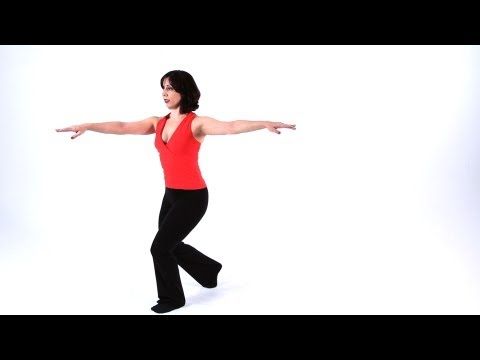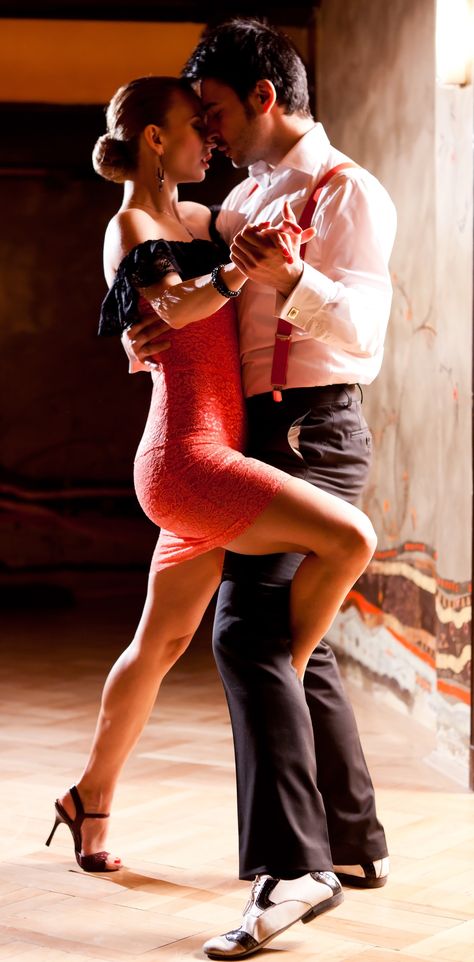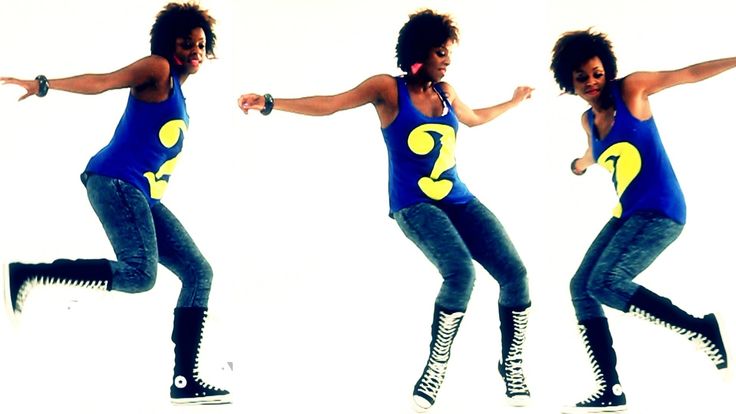How much does a jazz dancer make
Utah Jazz Dancers say they still don't make a living wage, despite claims of policy changes
While players on the Utah Jazz sign multi-million contracts, another group of athletes, relegated to the sidelines, says they are struggling to bring in enough money to pay the rent.
The Utah Jazz Dancers, like the basketball players, are athletes in the highest level of their field. And yet, according to a Yahoo Lifestyle report, the dancers say they are being paid so little that they have to work second or even third jobs just to get by.
That’s just one of the accusations the exposé has thrown at the world of cheerleading in the NBA. Jazz Dancers, they claim, are pushed into eating disorders and benched if they gain weight.
Representatives from the Utah Jazz have categorically denied the accusations in the article, characterizing the women’s stories as a thing of the past. In 2012, a spokesperson says, the organization “re-evaluated the program to ensure that it creates a positive and healthy work environment. ”
But members of the Utah Jazz Dancers themselves are continuing to report that they have to work a second job to make ends meet.
Inside the world of the Utah Jazz Dancers
Jazz Dancer Crystal Armstrong, in 2005, has her stomach measured by a trainer. According to former Jazz Dancer Sydney Sorensen, cheerleaders who had put on weight would not be allowed to perform. (Photo: Jeffrey D. Allred, Deseret News)
The Jazz are just one of many teams investigated in Yahoo’s report, which interviewed 15 former NBA cheerleaders about the conditions on the job.
Their report is nothing short of scathing, accusing NBA cheerleading coaches of “brainwashing” their dancers, paying them little more than “gas money”, and harassing the women for their weight to the point that some women described throwing up their meals just to keep trim.
Women who’d worked with the Jazz spoke with Yahoo in disproportionate numbers. Of the fifteen women from all over the NBA who came forward, three were former Utah Jazz Dancers, and some of their stories were deeply concerning.
“We got weighed monthly; that’s what messed with me most,” Sydney Sorenson, who danced for the Utah Jazz from 2009 to 2012, told Yahoo.
If a woman had gained weight, Sorenson says, she wouldn’t be allowed to perform. That pressure pushed the dancers into some dangerous behavior.
“I came up with all these methods to weigh in smaller, like not eat anything solid for a week,” she says. “Point blank, I would say that I definitely had an eating disorder.”
Pay was another major point of contention. 14 out of 15 cheerleaders said that they worked a second job to make ends meet, with one former Jazz Dancer, Madison Murray, saying: “I had three jobs. I was getting up at 4 a.m. and working until 11:30 p.m.”
Sorenson, for her part, told Yahoo that she filed for unemployment because she couldn’t find time to make money while working for the team.
“I kind of crashed and burned,” she told Yahoo. “It had a huge effect on me.”
The Utah Jazz has declined to answer questions about the article.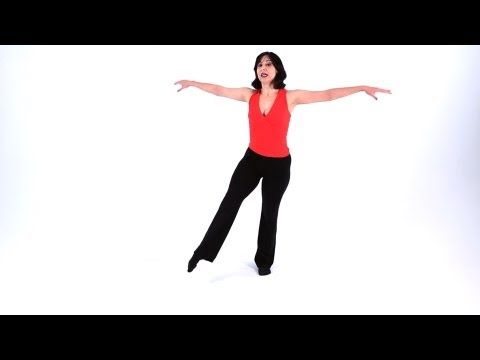 When KSL Newsradio’s Dave & Dujanovic invited a spokesperson to participate in an interview, they replied by repeating their statement, which reads, in full:
When KSL Newsradio’s Dave & Dujanovic invited a spokesperson to participate in an interview, they replied by repeating their statement, which reads, in full:
The Jazz dancers are valued employees for their work as part of the game night experience and many hours spent as community ambassadors. In 2012, our organization reevaluated the program to ensure that it creates an appropriate work environment, adheres to the fair labor standards act and aligns with our culture. Our dance troupe is now under the direction of a former Jazz dancer.
Dancers still don’t make enough to pay the bills
More than a hundred Utah Jazz Dancer hopefuls audition for a spot on the team. July 8, 2017. (Scott G Winterton, Deseret News)
Despite the Utah Jazz’s statement, however, the words of the Jazz Dancers themselves suggest that, when it comes to money, little has changed.
Alisha, a member of the Dancers’ current line-up, states in her profile on the site that the Dancers still aren’t making enough money to pay their rent, saying: “We all work other jobs or go to school.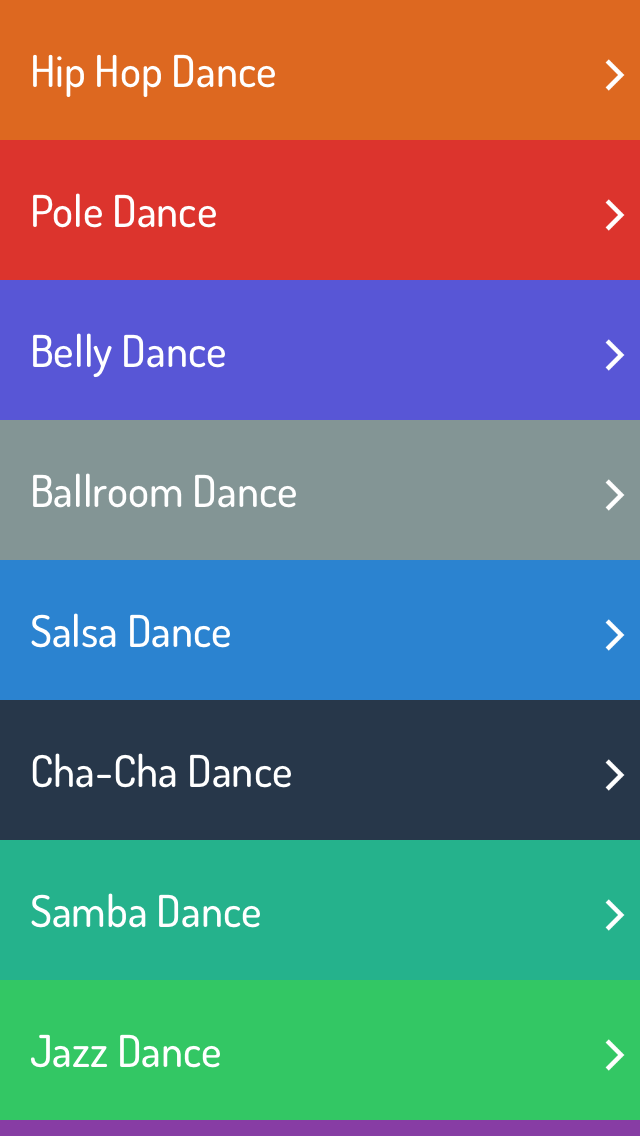 ”
”
The Jazz themselves seem to back up her claims. Directly on the audition application, they warn that “most girls are students or have other jobs”, making it clear that, whatever these women are being paid, it isn’t enough to live on.
It’s not easy to hold a full-time job while performing on an NBC cheerleading team, dancers say, and it affects their lives. Nine of the eighteen of the women on the team, directly on their official profiles, call managing the time commitment with their other obligations the “hardest part about being a Utah Jazz Dancer”.
It’s hard to pin down exactly how much they earn, but in the most recent salary disclosure we could find, released in 2002, Jazz Dancers were being paid just $25 for a four-hour practice and $45 for six hours of work during a game.
As an hourly rate, that worked out to little more than a dollar over minimum wage.
“It’s just crazy,” former Jazz Dancer Jennifer Stagg told KSL TV‘s Caitlin Burchill. “My babysitter makes more money than I made as a Jazz Dancer. ”
”
The Utah Jazz have assured us that those salaries have changed since then. When KSL reporters asked for clarification on how their wages changed in 2012, a spokesperson provided us with this statement:
“Instead of flat fee, we pay an hourly wage for time dancers spend at practice, games, traveling to official events or making community appearances.”
Unfortunately, we haven’t been able to get an exact figure for that hourly wage. But again, the Dancers’ own comments tell a very different story.
More to the story
When KSL Newsradio’s Dave & Dujanovic talked about this story, Dave said that he’d talked to Jazz Dancers about the pay before.
“They seemed resigned to the facts,” Dave said, “and that’s terrible.”
If you missed the show live, you can still catch everything they had to say on the Dave & Dujanovic podcast:
Dave & Dujanovic can be heard weekdays from 9 a.m. to noon on KSL Newsradio. Users can find the show on the KSL Newsradio website and app, as well as Apple Podcasts and Google Play.
How Much Do Utah Jazz Dancers Get Paid? [Comprehensive Answer]
How much do utah jazz dancers get paid?
As of 2019, the average salary for a professional jazz dancer is $60,000 per year. Dancers who are just starting out in their career can expect to make $15-$20 per hour. Salaries will vary depending on the company you work for, your experience, and the location of the company.
Learn More: How to get paid remixing a song?
Video Answers
How much do Utah Jazz dancers get paid?
Utah Jazz dancers are some of the most talented and sought-after dancers in the NBA. So, how much do they get paid?
Utah Jazz dancers make on average $50,000 per year. The top earners can make up to $75,000 per year. dancer salaries can be broken down into two categories, those who are full-time dancers and those who are per diem or part-time dancers. Full-time dancer salaries start at $1,000 per week and can increase to $1,500 per week, while per diem dancer salaries start at $500 per day.
Full-time dancer salaries start at $1,000 per week and can increase to $1,500 per week, while per diem dancer salaries start at $500 per day.
The pay for Utah Jazz dancers varies based on experience and skill level. Dancers with more experience and who have been with the team for multiple seasons can earn a higher salary. The starting salary for a first-year dancer is $30,000.00. Salaries increase each year with the average salary for a fourth-year dancer being $60,000.
Dancers are also given the opportunity to earn extra money through various bonus opportunities. These bonuses can include, but are not limited to, appearance fees, merchandise sales, and dance school teaching fees. Bonuses are typically given out at the end of the season and can range from a few hundred dollars to a few thousand dollars.
The pay for Utah Jazz dancers is very competitive when compared to other NBA teams. Jazz dancers are some of the highest-paid dancers in the league.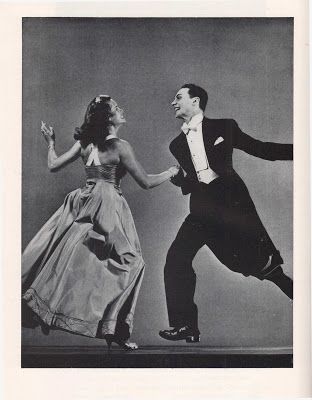
Learn More: How much do nuns get paid?
How often do Utah Jazz dancers get paid?
Utah Jazz dancers are some of the most popular and talented dancers in the NBA. While their primary focus is dancing during Jazz game halftime performances and timeouts, they also do many other things to stay busy. Because they are so popular, they are often in high demand for other events and performances. This means that they cancommand high prices for their services. While each dancer's salary is different, they all make a very good living.
Many people wonder how often Utah Jazz dancers get paid. The answer is that it really depends on the dancer and their schedule. Some dancers may get paid weekly, while others may get paid bi-weekly or monthly. It really just depends on their individual contracts. However, it is safe to say that most Utah Jazz dancers make a very good living and are able to support themselves and their families comfortably.
Learn More: How do actors get paid when not working?
How does the pay for Utah Jazz dancers compare to other NBA teams?
While the average salary for an NBA player is around $5.15 million, the average salary for a Jazz dancer is only $50,000. This is because the Jazz are owned by the Miller family, who also owns the Utah Jazz basketball team. The Jazz dancers are not paid as much as their counterparts on other NBA teams because they are not considered to be professional athletes. Instead, they are considered to be entertainment, which is why their salaries are much lower.
Learn More: How dividends might be paid crossword?
What is the average salary for a Utah Jazz dancer?
There is no one-size-fits-all answer to this question, as the average salary for a Utah Jazz dancer depends on a number of factors, including the dancer's experience, training, and notoriety. However, according to The Salt Lake Tribune, the average salary for a member of the Jazz dance team is $50,000 per year. This figure is based on the salaries of the eight members of the team who were listed on the Jazz's website as of September 2019. The salaries of the team's two captains, who have been with the Jazz for several years, are likely higher than the average, while the salaries of the team's newer members are likely lower.
However, according to The Salt Lake Tribune, the average salary for a member of the Jazz dance team is $50,000 per year. This figure is based on the salaries of the eight members of the team who were listed on the Jazz's website as of September 2019. The salaries of the team's two captains, who have been with the Jazz for several years, are likely higher than the average, while the salaries of the team's newer members are likely lower.
The Jazz dance team is one of the most popular and visible components of the Utah Jazz organization, performing at all home games and many away games, as well as appearing at various events and functions throughout the year. The team is highly skilled and talented, with each member having extensive dance training and experience. The team's dancers are also required to maintain a professional appearance and demeanor at all times, both on and off the court.
Due to the high level of skill and experience required to be a member of the Jazz dance team, as well as the team's popularity and visibility, the salaries of the team's dancers are significantly higher than the salaries of dancers on most other NBA dance teams. For example, the average salary for a dancer on the Los Angeles Lakers dance team is just $32,000 per year, while the average salary for a dancer on the Milwaukee Bucks dance team is even lower, at just $26,000 per year.
For example, the average salary for a dancer on the Los Angeles Lakers dance team is just $32,000 per year, while the average salary for a dancer on the Milwaukee Bucks dance team is even lower, at just $26,000 per year.
In addition to their salaries, the members of the Jazz dance team also receive a number of other benefits, including free dance classes and access to a nutritionist. The team's dancers are also given the opportunity to travel with the team to away games and to participate in promotional events and appearances.
Learn More: When will essure settlements be paid 2022?
How do Utah Jazz dancers get paid?
In order to become a Jazz dancer, you must first audition and be selected by the team. Once you become a member of the Jazz dance team, you will be responsible for performing at all home games as well as any promotional appearances or events that the team may have. You will also be required to attend rehearsals on a regular basis.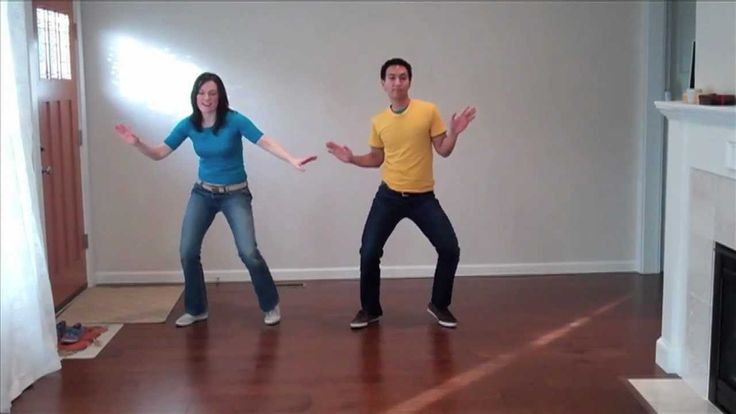 As a Jazz dancer, you will be compensated for your time and effort. Your pay will be determined by the number of hours you work, whether you are a full-time or part-time dancer, and your experience level.
As a Jazz dancer, you will be compensated for your time and effort. Your pay will be determined by the number of hours you work, whether you are a full-time or part-time dancer, and your experience level.
Learn More: How much did arnold get paid for terminator?
Do Utah Jazz dancers get paid per game?
Most professional dance team members in the NBA are paid hourly, with Jazz dancers being no exception. While the average salary for an NBA dancer is $50-$75 per game, top-tier teams like the Jazz pay their dancers upwards of $200 per game. In addition to their game salary, Jazz dancers also earn money from performing at other events, such as corporate functions and private parties.
Learn More: How much do scare actors get paid?
How much do Utah Jazz dancers make in a season?
Utah Jazz dancers make anywhere from $50 to $100 per game, averaging about $2,000 to $2,500 per season.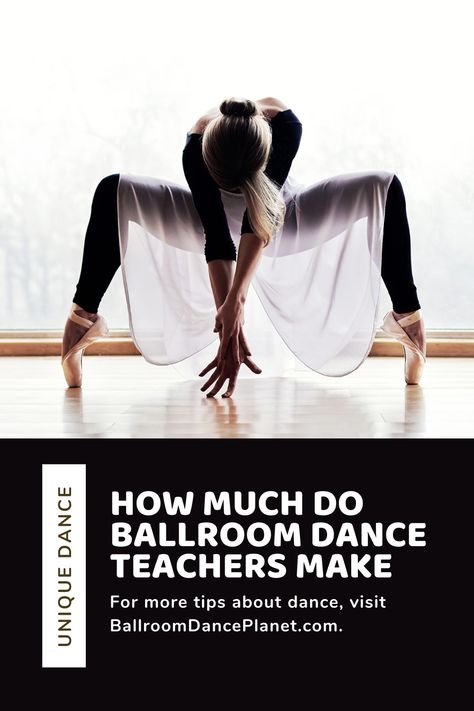 Dancers can also make extra money from merchandise sales and public appearances.
Dancers can also make extra money from merchandise sales and public appearances.
Learn More: How much do hall of famers get paid?
Do Utah Jazz dancers get paid for practice?
The short answer is no, Utah Jazz dancers do not get paid for practice. However, they do receive a significant amount of money for appearances and performances. In addition, they may receive a smaller allotment of money for attending promotional events or workshops. Dancers in the Utah Jazz organization are considered part-time employees and are not eligible for benefits such as healthcare or paid vacation days.
Learn More: How much do furry artists get paid?
How do Utah Jazz dancers get paid for appearances?
Appearance fees for Utah Jazz dancers are set by the Jazz organization. Depending on the event, the number of dancers required, and the location, these fees can range from a few hundred to a few thousand dollars per appearance. In addition to their appearance fee, dancers also receive transportation, lodging, and per diem expenses if they are required to travel for an event.
In addition to their appearance fee, dancers also receive transportation, lodging, and per diem expenses if they are required to travel for an event.
Learn More: How much do breaking amish get paid?
Related Questions
What is the salary cap for the Utah Jazz?
The Utah Jazz salary cap for the 2020-21 season is $109,140,000.
What is the average salary of a professional dancer?
The average salary for professional dancers is $15 per hour. However, depending on the experience and skill set of the dancer, salaries can range from around $8 to over $50 per hour. The highest paying choreographers typically charge in the mid-to-upper six figures.
What is the style of dance for the Utah Jazz?
The style of dance for the Utah Jazz is hip hop and jazz with higher levels of technique required.
Who is the highest paid player on the Utah Jazz?
The highest paid player on the Utah Jazz is Rudy Gobert, who earns a yearly salary of $35,344,828.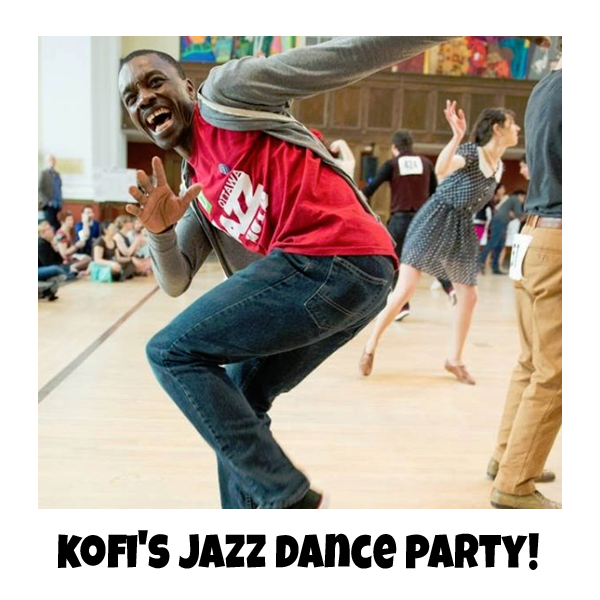
What are the Utah Jazz's cap holds?
The Jazz's currently active cap holds are: $2,502,679 (Shaun Livingston) and $915,471 (Dante Exum).
Are the Utah Jazz over the luxury tax?
Yes, the Jazz are currently over the luxury tax threshold. This means they will have to pay fines if they exceed the salary cap by more than $5 million for the season.
Do two-way salaries count as Cap holds for the jazz?
No, two-way salaries do not count as cap holds for the Jazz.
How much does the average jazz musician make?
This is a difficult question to answer, as it depends on a number of factors including how long you have been playing music and your individual skill set. Generally speaking, however, jazz musicians can make anywhere from around $30,000 to over $80,000 annually.
How hard is it to become a jazz dancer?
Becoming a jazz dancer is incredibly hard, both in terms of commitment and time. To become a great jazz dancer, you need to practice diligently and perform at competitions. It can be difficult to make a living as a professional jazz dancer, and many dancers work day jobs to support themselves. However, some elite dancers can earn over $20,000 per month.
To become a great jazz dancer, you need to practice diligently and perform at competitions. It can be difficult to make a living as a professional jazz dancer, and many dancers work day jobs to support themselves. However, some elite dancers can earn over $20,000 per month.
How much do Broadway dancers make?
Broadway dancers are often responsible for negotiating their employment contracts and salaries. In this article, we explain how professional dancers are compensated and different career roles on Broadway. How much do Broadway dancers make? Professional dancers in the U.S. earn an average of $24.50 per hour. This figure varies depending on experience and location, but is generally quite high when compared to other similarly skilled professionals. The average hourly wage of all American workers was $23.59 as of 2018, according to data from the Bureau of Labor Statistics. Dancers also enjoy significant advantages in terms of pay and benefits over many other workers in the performing arts industry.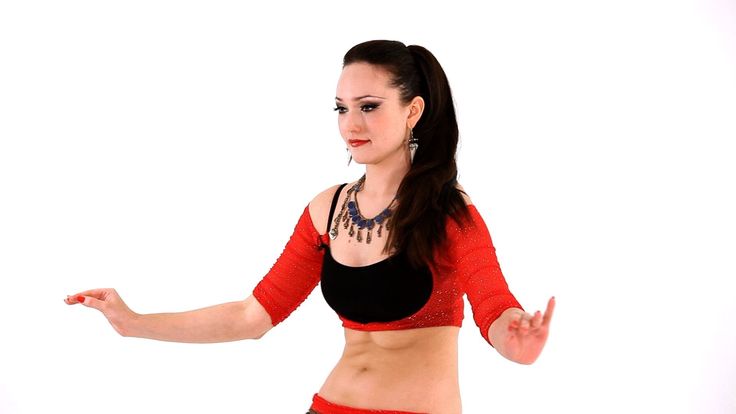 For example, Broadway dancers receive lucrative union contracts that provide them with a range of benefits, such as health insurance and retirement plans. In addition, many theaters allocate a substantial portion of their ticket prices toward compensating their casts and crews, which means that freelance dancers on Broadway often earn substantially more than those working in similar theater
For example, Broadway dancers receive lucrative union contracts that provide them with a range of benefits, such as health insurance and retirement plans. In addition, many theaters allocate a substantial portion of their ticket prices toward compensating their casts and crews, which means that freelance dancers on Broadway often earn substantially more than those working in similar theater
How much does a dancer get paid?
The average salary for a dancer is $36,593 as of December 27, 2021. Salary ranges can vary widely depending on many important factors such as education, certifications, additional skills, the number of years you have spent in your profession.
What are the duties of a professional dancer?
Broadway dancers rehearse several hours a day and often tour for months on end. They are required to maintain physical and emotional intensity as they perform complex dance numbers that can demand weeks, even months of rehearsal time. In addition to their regular dance rehearsals, Broadway dancers often attend acting classes to help them better understand their role in the show and learn how to project their characters to an audience.
In addition to their regular dance rehearsals, Broadway dancers often attend acting classes to help them better understand their role in the show and learn how to project their characters to an audience.
Is it hard to get a job as a professional dancer?
There is no one-size-fits-all answer to this question, as the challenge of finding work as a professional dancer will vary based on the specific skills and experience that an individual brings to the table. However, one common tip that many successful dancers follow is to NETWORK! participate in industry events and meetups, reach out to other professionals through social media, and speak with recruiters.
What is it like to be a Broadway dancer?
Broadway dancing is an intense and physically demanding form of performance. Professionals must be able to execute complex choreography while maintaining precise timing and posture. The performers must also have strong stamina and be able to withstand long hours of rehearsal and performance.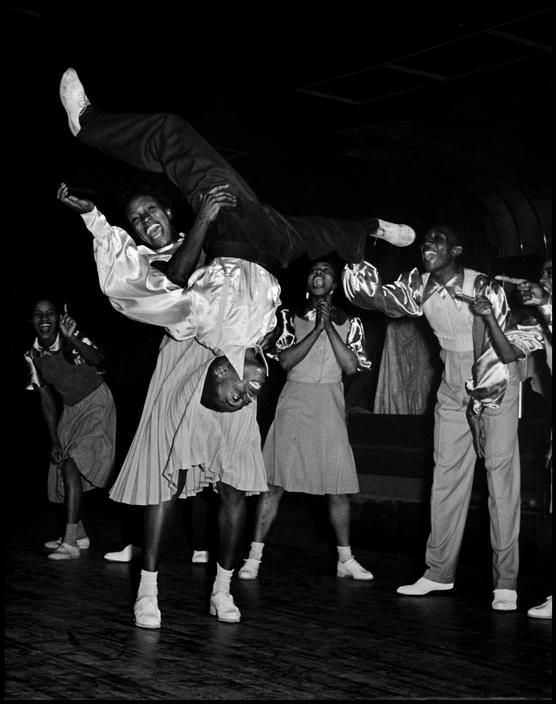 What are some of the skills that Broadway dancers develop? Broadway dancers learn how to perform in a wide range of styles and genres, including ballet, contemporary, tap, opera, jazz, and more. They can also learn how to handle diverseiating lighting conditions and Wurlitzer theatre pipe organs.
What are some of the skills that Broadway dancers develop? Broadway dancers learn how to perform in a wide range of styles and genres, including ballet, contemporary, tap, opera, jazz, and more. They can also learn how to handle diverseiating lighting conditions and Wurlitzer theatre pipe organs.
What is the salary cap for the Utah Jazz?
The salary cap for the Utah Jazz is $109,176,000.
What is the style of dance for the Utah Jazz?
The style of dance for the team is hip hop and jazz. The higher levels of technique are required because of the fast-paced nature of these dances.
Are the Utah Jazz over the luxury tax?
Yes, the Jazz are currently over the luxury tax threshold. This means they will be fined if they continue to spend over the limit. As of right now, their Total Cap Allocations sit at $94,807,683.
Used Resources
Facts about the Utah Jazz dancers - Deseret News
Jazz Dancers | Utah Jazz
How much does a Utah jazz dancer make? - Answers
Utah Jazz Player Salary and Roster Info - Basketball Insiders
11 dancers who jumped into Hollywood stardom and much bigger salaries
Becoming a great performer takes a lot of practice. Reality shows that we all believe that someone can become a star for the night. However, if you look back at most of the contestants' success stories, 99% of them are working on a career in their chosen field since they were in diapers. For dancers, this is especially true. Unfortunately, due to the rigor of the profession and the demands on the body, a dancer's career can be over almost as soon as it begins. It is also an incredibly expensive calling, the cost of classes, shoes, clothing and any injuries all fall on the dancer. Hollywood has a surprising number of actors who started their careers as dancers. They made the jump to acting jobs for a variety of reasons, but the choice led to their global fame, longer careers and much bigger salaries . Not to mention they avoided hip replacement and knee surgery. Here are 11 actors who went from dance studio to film studio...and just how much money they made as a result.
Not to mention they avoided hip replacement and knee surgery. Here are 11 actors who went from dance studio to film studio...and just how much money they made as a result.
Zoya Saldana
Stuart K. Wilson / Getty Images
Salary as a dancer: approx. 3000 DOP per month ($69 USD)
Salary as an actor: $2,000,000 + per movie
Before she was busy with her feet in movies like Star Trek, The Losers and Avatar, Zoya Saldana was, well, just her feet. She was a student at the respected ECOS Espacio de Danza Academy in the Dominican Republic, where she lived for six years. She took daily ballet, modern and jazz classes. After returning to the US, she turned her attention to musical theatre. She landed her first lead role in the 2000 film Center Stage. The film was about what else, ballet dancers are fighting. It was only from there. Her net worth as an actress is currently $14 million.
Lea Thompson
Salary as a dancer: approx. $600 per week
$600 per week
Salary as an actor: approx. $25,000 per episode for her series, "Switched at Birth",
Lea Thompson did it in her time in the world of dance. She started dancing when she was in elementary school, and by the age of 14 she was receiving scholarships to major dance schools. She went on to study at the American Ballet Theatre, San Francisco Ballet, and Pennsylvania Ballet. From there, she danced with several companies - including the Pennsylvania Ballet, the Minnesota Dance Theatre, the Ballet Repertoire and the American Ballet Theatre. She was considered a dancer to watch. Then the famous dancer Mikhail Baryshnikov, who was then the artistic director of the American Ballet Theater, told her that her body type was wrong. "A fine dancer, but too stocky," he said. She shifted her focus to acting and went on to earn legions of fans with film and television projects such as Back to the Future, All the Right Moves, Some Kind of Wonderful, and the hit sitcom Carolina to the City. Her Net Worth as an actress makes $14 million.0011
Her Net Worth as an actress makes $14 million.0011
Mia Wasikowksa
Salary as a dancer: approx. AU$600/week (US$550)
Salary as an actor: approx. At the age of thirteen, she went to school full-time and danced a full 35 hours a week. However, the bone spurs and pressure to be perfect finally proved too difficult. She decided to shift her focus to acting when she was in high school and started working almost immediately. She began appearing on In Treatment in 2008. She has since starred in films such as Defiance, Amelia, Alice in Wonderland, The Kids Are Alright, Jane Eyre and Stoker and has projects lined up through 2015. .
Catherine Zeta-Jones
Salary as a dancer/actor: £550 per week (about $900)
Salary as a film actor: $10,000,000 per film A movie star married to fellow actor Michael Douglas, Catherine Zeta-Jones was a lover of musical theater. She began training to be a triple threat when she was a child and went on to dance, sing and perform in professional productions of Annie, Bugsy Malone, The Pajama Game, 42nd Street and Opera, Street Stage , among other projects.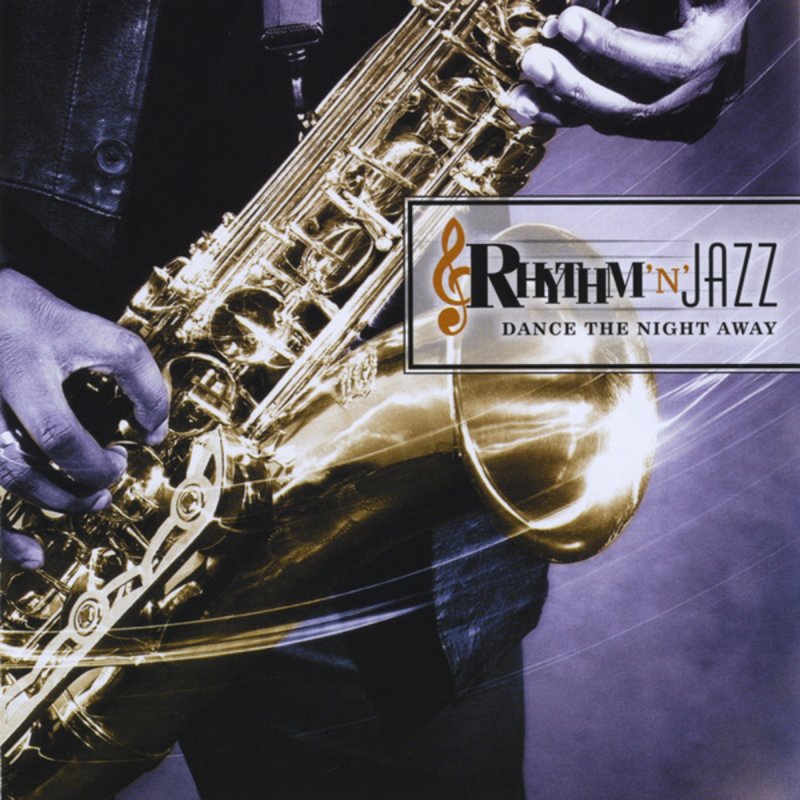 She switched her focus to acting at the beginning of 90s and then took Hollywood by storm. However, she has since returned to her musical theater with great success, winning an Oscar for her performance in the film version of Chicago and a Tony Award for her work in the Broadway revival of Little Night Music. She currently has a net worth of $45 million.
She switched her focus to acting at the beginning of 90s and then took Hollywood by storm. However, she has since returned to her musical theater with great success, winning an Oscar for her performance in the film version of Chicago and a Tony Award for her work in the Broadway revival of Little Night Music. She currently has a net worth of $45 million.
Penelope Cruz
Salary as a dancer: approx. 430 euros per week (about 600 US dollars)
Salary as an actor: 8,000,000 dollars per film
Penelope Cruz started dancing when she was in elementary school. She spent nine years focusing entirely on the art form, continuing to land at the prestigious Spanish National Conservatory. She spent three years there and continued her studies in New York. However, by her mid-teens she realized that acting might be more of a calling for her and she shifted her focus. She booked the job almost immediately, first learning when she was hired to host the Spanish teen talk show La Quinta Marcha when she was sixteen. She has had a very busy career in the US and Spain and has also won an Oscar and a BAFTA for her work on Vicky Cristina Barcelona. Like Catherine Zeta-Jones, she also recently returned to her dancing roots, performing a standout number in the film musical Nine. She currently has a net worth of $55 million.
She has had a very busy career in the US and Spain and has also won an Oscar and a BAFTA for her work on Vicky Cristina Barcelona. Like Catherine Zeta-Jones, she also recently returned to her dancing roots, performing a standout number in the film musical Nine. She currently has a net worth of $55 million.
Zhang Ziyi
Salary as a dancer: approx. $1,800 CNY per week (about $300 per week)
Salary as an actor: $2,000,000 per film
dragon", "Rush Hour 2" and "House of Flying Daggers". Surprisingly, she is not trained in martial arts! Instead, the actress is an accomplished dancer who started learning dance when she was in elementary school. She continued her studies at the prestigious Beijing Dance Academy and then won the National Youth Dance Championship. However, instead of acting out her win at a dance company job, she turned it into a job in television commercials. Subsequently, she graduated from the Central Academy of Drama and since then has been constantly working in film projects in Asia and the United States. She currently has $100 million .
She currently has $100 million .
Jamie Bell
Salary as a dancer: £550 per week (about $900) "Billy Elliott" video, about a small town boy with big dancing dreams. History was not so far removed from his own. He grew up in a family of dancers and started dancing in the hallway outside of his sister's dance class when he was young. He eventually began his own training in dance, both in ballet and tap, but hid it from his circle of friends. His life as a dancer eventually became less secret as he began winning national and international tap competitions. He subsequently decided to shift his focus to acting. He got his start in musical theater and then won the lead role in Billy Elliott out of 2,000 young actors. He has since appeared in films such as Nicholas Nickelby, King Kong, Jumper, Jane Eyre and Man on Ice and has a net worth of $6 million.
Christopher Walken
Actor/Dancer Salary: $450 per week
Actor Salary: $2,000,000 + per film
Christopher Walken has appeared in everything from rom-coms to western music videos. However, he started his professional career as a model and dancer and also worked as a lion tamer for a circus! He dropped out of college after landing the lead in the off-Broadway revival "The Best Foot Forward" opposite Liza Minnelli. He continued his training as a dancer and appeared in numerous musicals before turning his attention to film and television work. His career is now legendary. The Oscar winner got the chance to push out his dance moves in several projects, including the movie Hairspray, as well as Fatboy Slim's wildly popular Weapon of Choice video. He has a net worth of $30 million.
However, he started his professional career as a model and dancer and also worked as a lion tamer for a circus! He dropped out of college after landing the lead in the off-Broadway revival "The Best Foot Forward" opposite Liza Minnelli. He continued his training as a dancer and appeared in numerous musicals before turning his attention to film and television work. His career is now legendary. The Oscar winner got the chance to push out his dance moves in several projects, including the movie Hairspray, as well as Fatboy Slim's wildly popular Weapon of Choice video. He has a net worth of $30 million.
Patrick Swayze
Salary as a dancer: approx. $600 per week
Salary as an actor: approx. $6,000,000 per movie
Before Patrick Swayze got the audience lost in Dirty Dancing, he was a dancer in New York. He grew up in his mother's studio in Texas and went on to study at the Harkness Ballet School and the Harkness Ballet School.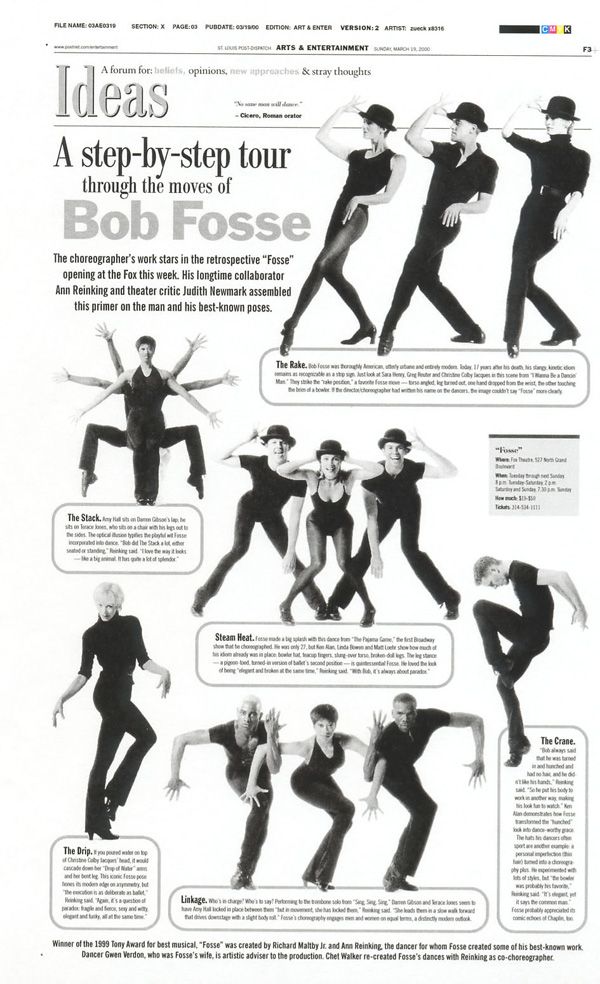 Joffrey in New York. He began dancing professionally for Disney and then landed the role of Danny Zuko in the Broadway production of Grease. He also appeared in the Broadway production of Goodtime Charley, before films and television came onto the scene. In addition to Dirty Dancing, his other hit films included Ghost, Point Break and Donnie Darko. He returned to his theatrical roots in the late 2000s, performing at Chicago. He passed away in 2009year. His net worth is $40 million.
Joffrey in New York. He began dancing professionally for Disney and then landed the role of Danny Zuko in the Broadway production of Grease. He also appeared in the Broadway production of Goodtime Charley, before films and television came onto the scene. In addition to Dirty Dancing, his other hit films included Ghost, Point Break and Donnie Darko. He returned to his theatrical roots in the late 2000s, performing at Chicago. He passed away in 2009year. His net worth is $40 million.
John Travolta
Salary as a dancer: approx. $600 per week
Salary as an actor: $20,000,000 per movie
You didn't think these dance moves were in movies like "Saturday Night Fever", "Staying Alive", "Pulp Fiction" and Hairspray came out of nowhere? Following in her mother's footsteps, the actress became a drama teacher and his siblings, all of whom were performers, John Travolta first worked in musical theater. He dropped out of school to focus on performing and landed on his first gig with professional travel company Grease.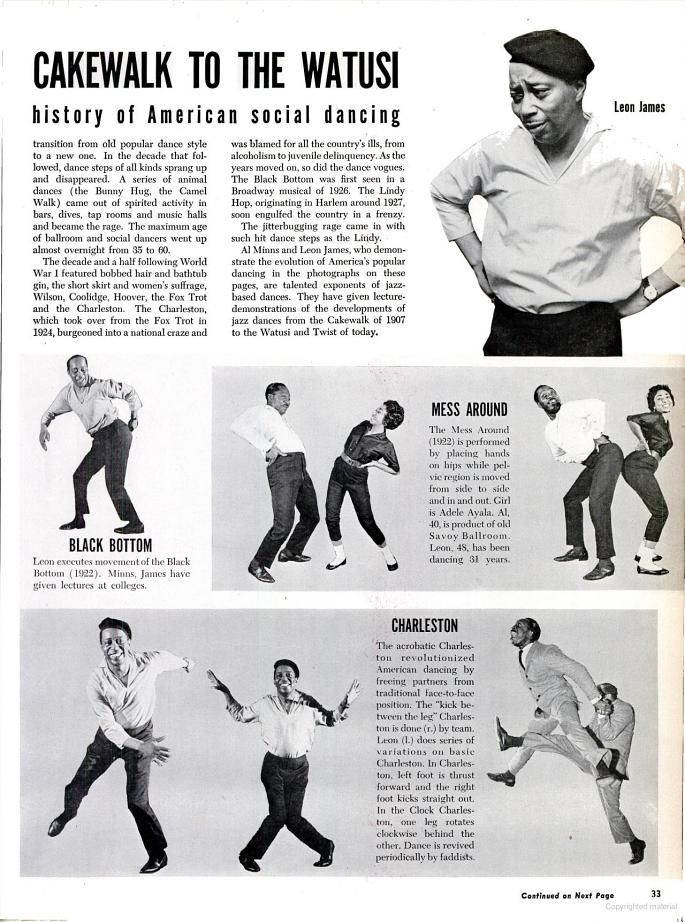 (The film he would later star in.) He then appeared on Broadway in Over Here!. However, Hollywood was what it wanted to be. He left the world of musical theater in New York and went to make films. His career has had its ups and downs. Interestingly, the projects that have been the most successful often show him dancing. Go figure. His current net worth is $165 million.
(The film he would later star in.) He then appeared on Broadway in Over Here!. However, Hollywood was what it wanted to be. He left the world of musical theater in New York and went to make films. His career has had its ups and downs. Interestingly, the projects that have been the most successful often show him dancing. Go figure. His current net worth is $165 million.
Alexander Gudonov
Salary as a dancer: $5,500 per week (ABT director)
Salary as an actor: $250,000
States in the late 70s. He started dancing when he was nine years old at the Riga State Ballet School. His classmate (and future boss) was Mikhail Baryshnikov. He continued to work as principal dancer with such internationally renowned companies as the Moscow Classical Ballet, the Bolshoi Ballet and the American Ballet Theatre. He began his acting career after Mikhail Baryshnikov repeatedly fired him from the American Ballet Theater at 1982 year. He earned rave reviews for his work in his debut film Witness and then became a crowd favorite with his performance as Carl, the villain in Die Hard. However, his career was tragically short. He passed away in 1995.
However, his career was tragically short. He passed away in 1995.
This list consists of contemporary actors. In old Hollywood, being an actor, you had to be a singer, a dancer. If you couldn't do all three when the studio signed you, they made sure you could do all three by the time you made your first film. Gene Kelly, Danny Kai, Fred Astaire, Ginger Rogers, Sid Cherise, Donald O'Connor, Judy Garland, Howard Keel, Chita Rivera, Rita Moreno and Ann-Margret are just a few actors and actresses who really could do it all. Audrey Hepburn couldn't sing, but she was a talented ballerina, and part of her charm came from the balance she learned in the dance studio. Those days are mostly gone. However, there has been a resurgence in the popularity of musical films and dance films over the last decade, so perhaps we will start to see more actors with dance chops on screen. We hope here. All those dancers out there have to eat and pay rent .
Google+
Tumblr
where to study, salary, pros and cons
Author: ProfGuide
Updated by
Dancer is a person of art who performs rhythmic movements to music, taking part in theatrical performances, shows.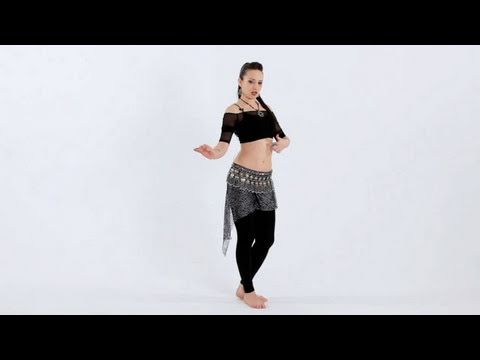 The profession belongs to the type “a person is an artistic image”, it requires excellent self-discipline and, of course, talent. Children who distinguish literature, physical education, music and singing from all school subjects can become dancers. By the way, the ProfGid career guidance center has recently developed an accurate career guidance test that will tell you which professions suit you, give an opinion about your personality type and intelligence.
The profession belongs to the type “a person is an artistic image”, it requires excellent self-discipline and, of course, talent. Children who distinguish literature, physical education, music and singing from all school subjects can become dancers. By the way, the ProfGid career guidance center has recently developed an accurate career guidance test that will tell you which professions suit you, give an opinion about your personality type and intelligence.
Short description
This profession has a rich history and is closely associated with the arts. However, the success of dancers by more than 50% depends on dedication, endurance, self-discipline. A specialist can work independently, performing solo choreographic numbers, it is also worth highlighting pair and collective dances. There are a lot of types and techniques of this art direction:
- ballet;
- pop and folk dance;
- historical dance and others.
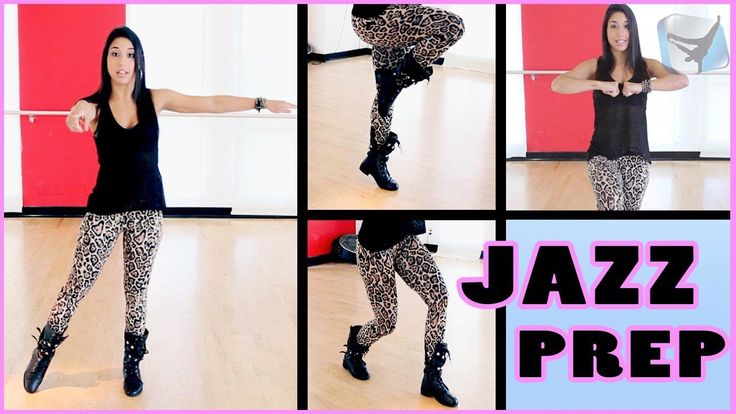
See also:
Also distinguish styles such as street jazz, hip-hop, R'n'B, contemporary dance, street dance, etc. Dancers choose the style and type of performing arts based on their physical abilities, temperament, personal preferences. On stage, they create artistic images, convey emotions, making the hearts of the audience tremble.
Features of the profession
Anyone can become a professional dancer, but it is worth starting training in childhood. Choreographers recommend sending children to dance studios at the age of 3-7, which will allow them to develop good posture, plasticity, stretching, a sense of rhythm and other skills necessary for professional performance. Dancers most often work in 1-2 overlapping styles, they pay special attention to training and rehearsals, maintaining excellent physical shape. A career is short, because its peak is at the age of 15-25 years, and after 30 years, most specialists change their field of activity.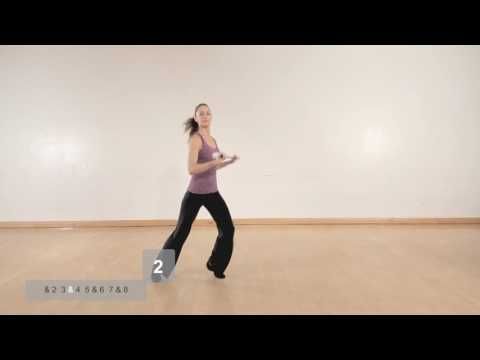 They can realize their talent and knowledge in other areas, working as directors, choreographers, school teachers.
They can realize their talent and knowledge in other areas, working as directors, choreographers, school teachers.
Dancers independently or under the guidance of a choreographer create performances: choice of music, sequence and rhythm of movements, costumes and image, facial expressions, plasticity. Before performing the dance, they rehearse for a long time, honing their skills. Many members of this profession often travel around their home country and travel abroad, where they give concerts. The activity is associated with certain difficulties, which leaves an imprint on the lifestyle and character of the dancer.
Pros and cons of the profession
Pros
- Excellent physical development, because dancing strengthens the body and willpower.
- Opportunity to work on the best scenes.
- Talented dancers achieve success quickly.
- The profession is interesting, active and ambitious people will like it.

- Opportunity to earn income from various sources, because dancers work alone or in pairs, can take part in private productions, star in music videos.
- Useful business connections in the world of art.
- The opportunity to change the field of activity, because dancers often open schools, give private lessons, work as choreographers - the choice of directions is huge.
Cons
- High injury rate.
- Serious injuries can put an end to a professional career.
- Short career period.
- Very high competition.
See also:
Important personal qualities
Dancers have excellent plasticity, but in this profession not only technical performance is important, but also emotionality. The dancers convey the idea of the performance with the help of movements, facial expressions, so they must be distinguished by well-developed artistry. Increased efficiency, resistance to physical stress and low pain threshold are very important, because rehearsals and performances often end with sprains, dislocations and other minor injuries. Only those people who do not suffer from laziness, negligence, excessive self-confidence ascend to the pinnacle of success.
Only those people who do not suffer from laziness, negligence, excessive self-confidence ascend to the pinnacle of success.
Training for a dancer
Professional education can be obtained in various institutions:
- schools and academies of choreography;
- dance studios;
- colleges;
- universities.
There are no special requirements for the education of a dancer, the level of his skill is determined during choreographic tests. It is worth starting training at a young age in order to reach a professional level. Let's consider the most interesting directions:
- "The art of dance (by type)", implemented in choreographic colleges and schools. You can start training after grades 7-9, which depends on the requirements of the college;
- The Art of Ballet. The direction of training is open in many creative colleges, studio schools, academies.
 Children who have completed the 4th grade of the school are invited to study.
Children who have completed the 4th grade of the school are invited to study.
You can also go to study at a university, choosing a specialty related to choreography, folk dance and other areas. Primary training can be obtained in public and private schools of choreographic art, during individual lessons.
Universities
-
4 years
90,000 RUB/year
12 budget places
-
4 years
158,100 RUB/year
23 budget places
-
4 years
65 000 ₽/year
8 budget places
-
4 years
200,000 ₽/year
16 budget places
Best Primary Schools
- Dance Quarter School.

- School for children "Dancevaliya".
- State 27 Dance Studio.
Best colleges and academies for dancers
- ARB im. A. Ya. Vaganova.
- MGAH.
- MCU at the Moscow State Academy of Theater Arts "Gzhel".
- School-studio (school) at GAANT them. I. Moiseeva.
- KMTI them. G. P. Vishnevskaya.
Best universities
- IPCC.
- GITIS-RATI.
- MGAH.
- ARB them. A. Ya. Vaganova.
- Russian State University A. N. Kosygin.
- ISI.
- UGAI.
- SPbGUP.
- AGIIC.
- KemGIK.
See also:
Place of work
Dancers are in demand in theaters, film industry and organization of holidays and events. They can work as teachers, find vacancies in nightclubs, private groups - there are many options for employment.
Salary
There is no exact tariff rate in this segment, because everything depends on the style in which the dancer works, personal qualities, education, reputation and experience.